She grew up in the woods and streets surrounding Lake Champlain, Vermont. Raised by artists, she stepped into her full-time artisan life in her 30s. She's a ceramicist, sewist, fashion designer, and I think, philosopher.
How did it begin?
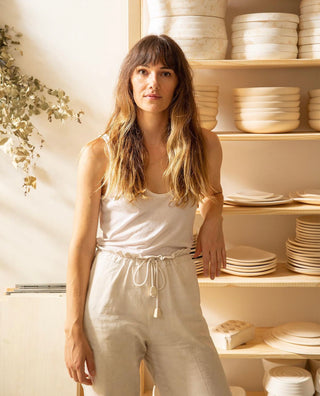
meet lucy park
What kind of kid were you? How’d you spend your days?
I think I was curious and fairly independent. I grew up in Vermont and spent a lot of time outdoors, biking and trekking around town with friends. We were little adventurers and our terrain was definitely the negative spaces of our neighborhood—the paths and woods behind homes, in between streets, along Lake Champlain. I was fortunate to have great friends and a lot of play in my life which made me a pretty joyful kid.
When did you know you had to make ceramics for a living—what was that realization moment for you?
Growing up surrounded by my father’s pots, there was always a curiosity in the back of my mind, but I didn’t discover how deep my own connection to the medium was until a few years ago.
I started taking classes again and then had a transformative experience at Haystack, a wonderful craft school in Maine. Having the opportunity to spend time with other ceramicists, all at different points in their careers, really opened my eyes to the possibility of making ceramics as a living.
While at Haystack, I was gushing to Nancy Green—who makes beautiful soda and wood fired ceramics in Georgia—about how incredible it is that she’s able to make it her living, and she very matter-of-factly stated that if I wanted to do it I just had to make it happen, simple as that. A week after returning from Haystack I started my first ceramics production gig and then began selling my own work about two years ago.
Your earliest memory that led you to be an artist:
My mother is a visual artist and my father was a potter. I can’t pinpoint a specific memory, but growing up surrounded by bronze castings and paper pulp paintings of my mother’s and huge four-foot tall pots of my father’s showed me that being an artist or maker was a potential path.
I’m a bit of a late bloomer and didn’t start pursuing my own creative practice in earnest until my 30s, but looking back, I can see the seed was planted at a very early age.
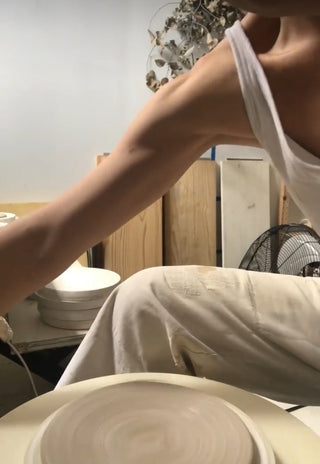
Where do you feel most connected with yourself?
I feel most connected when I’m sitting in meditation—it’s more a state of mind than a particular place. The magic is that I can take it anywhere. Some of my favorite places to meditate are loud or crowded, like the subway, because I can transform a hectic environment into something calm.
Clay sounds in some ways a physical manifestation of that process—taking something messy and unformed and transforming it into something with form. Is that what it is for you?
That's a really nice way of putting it, exactly.
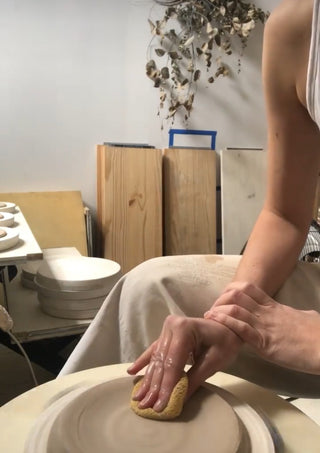
Creativity is then...
Playing with ideas and finding new ways of expressing them.
The times you feel most like yourself are when you are:
In the present moment. I think my sense of self is ever changing, so whatever version of myself I am in the present moment is the only version of myself there is.
When do you feel most inspired? What does it, do you think?
Moments of what I’ve learned to call structured nothing, when I’m able to let my mind wander, are where I weave together most of my inspiration. There are certain activities—for me things like jumping rope, taking a shower, walking to my studio – that occupy parts of my mind just enough to calm distractive thoughts so that the curious and imaginative parts of my mind are freed up. This idea of doing “nothing” in order to tap into doing “something” is a topic I’ve thought a lot about! I wrote my graduate design thesis on using absence as a material.
I find that to be so true for me too, the creative connections happen within that “nothingness”—creating space for the thoughts to come together. I love that so much, thank you.
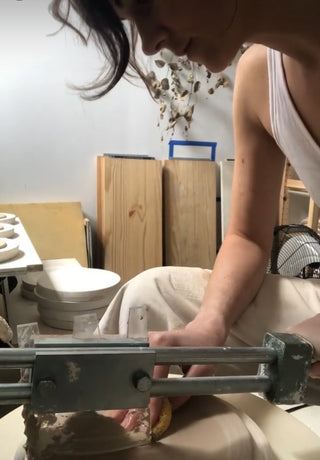
OK, an artist or maker you’re crushing on right now:
I recently fell in love with the work of the Polish artist, Paulina Olowska.
What is it about Olowska’s work that is speaking to you in this moment?
She had a solo show last year that was the final exhibition of the gallery Metro Pictures, before its permanent closure. She paints these incredible large scale portraits and scenes of women in an expansive range of roles, from custodians to students.
My favorite from that show is one of a principal and her pet dragon. There is so much power in her beautiful representations of various versions of femininity.
Your go-to meal:
When I’m busy in my studio I often forget to eat until I’m suddenly overwhelmed by hunger, so often my lunch is an avocado or scoops of peanut butter. I tear through jars of peanut butter by the spoonful—never putting it on anything! When I actually plan ahead, it's usually a mix of sauteed veggies with an egg and kimchi or sauerkraut thrown on top.
The best coffee you've ever had:
Milch Halle in Berlin. I don’t know that’s it's exceptional coffee but it tastes exceptionally good after a late night out in Berlin and before wandering through the galleries in the neighborhood.
A restaurant you wish you could be at right now: With who?
Masala Y Maiz with my two favorite travel companions, my fiancé, Ray, and my dear friend of 20 years, Isadora.
Three songs you’d put on a road trip mix:
For different parts of the journey:
- “Seabird” The Allessi Brothers
- “Over the Hills and Far Away” Led Zeppelin
- “Father Bird, Mother Bird” Khruangbin
Your all-time favorite cocktail. Where did you first have it?
A Sbagliato, which is equal parts Campari, sweet Vermouth, and sparkling wine. It was introduced to me by one of the chefs at a restaurant in Union Square where I worked for the better part of my 20s.
In Italian, "sbagliato" means "mistake" and the story is that the bartender who created the drink accidentally grabbed a bottle of sparkling wine instead of gin when making a negroni. It’s delicious and a reminder that the best things can happen when they don’t go as planned.
What’s the hardest part of creating ceramics?
Ceramics continuously break your heart. There are so many points in the process where things can go wrong – pieces cracking while drying, warping when firing, glazes doing crazy things—so failure seems to be an unavoidable component when working with clay.
But the challenges are what make it an endlessly exciting medium! I hope I’ll be doing it for many decades to come.
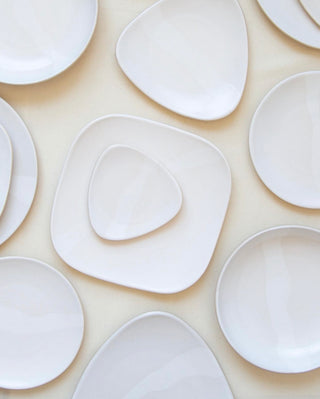
Thank you, Lucy—your work and the way you approach it is inspiring and I have no doubt you'll be doing it for decades to come.
more notes from hōm
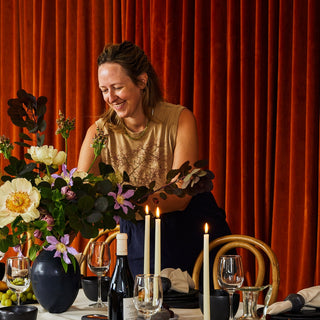
2024 impact report
Supporting organizations that make positive change is a big part of our mission at hōm. more
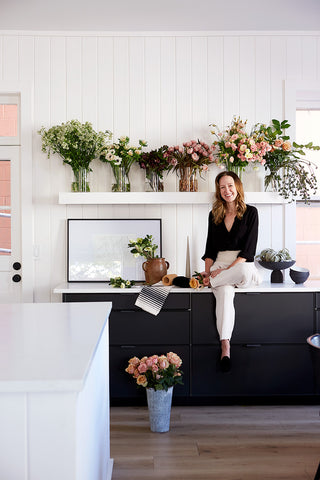
meet our founder
Britt Summers, a Hastings-on-Hudson local, opened The Hōm Market nearly 3 years ago, hoping to bring an inviting, inspiring destination to her community. more
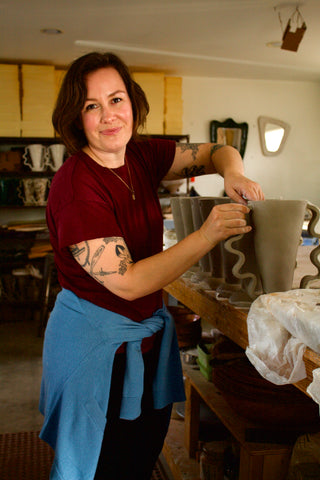
q+a: morgan peck
"I like vases; I’ve always been into flowers. I don’t know why I resisted making vases for so long…. I’ve grown to really embrace them. They are an object that people understand." more

